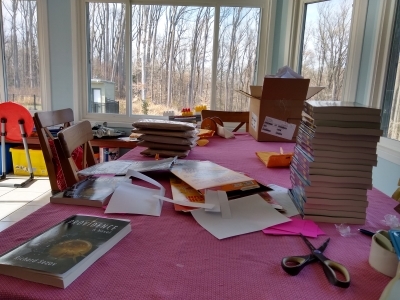Published: Apr 6, 2021 by Richard Sezov
 Over the weekend, I started shipping books. This was something I’d planned for, and of course I wanted to maximize my efficiency in several ways:
Over the weekend, I started shipping books. This was something I’d planned for, and of course I wanted to maximize my efficiency in several ways:
- I wanted shipping to be prompt and fast.
- I wanted my packaging to adequately protect my books.
- I wanted to spend as little as possible on packaging materials.
I used to be big into retro computing. For those of you who don’t know what that is, it’s the hobby of buying and refurbishing old, out of date computers from the 80s and 90s. I even taught a class at the local homeschool co-op on how computers work by using these old machines and emulators. Maybe I’ll write a blog entry at some time about why this is cool, but it’s not germane to this post.
If you plan to get into retro computing, you have to use eBay, and I used eBay a lot, probably to help grandmothers clean their attics of ancient machines their children had long abandoned. One of the things I really appreciated about all this eBay-ing was the creative packaging that many eBay-ers use to effectively cut costs but at the same time protect their merchandise well.
I decided to have the same philosophy when it came time to publish my book. For the past year or year and a half, therefore, I’ve been saving cereal boxes. Cereal boxes turned inside out make great packing boxes. And, of course, they’re incredibly cost-effective.
One of the other hobbies I’m into is 3D printing. In this hobby, you wind up collecting lots of spools of plastic filament, which is what you use to print your 3D objects. These spools come in nice cardboard boxes that are the perfect size to fit multiple books, so I’ve also been saving some of my filament boxes. If anybody decides to order multiple signed copies direct from me, they’ll probably be shipped in a filament box.
I’m new at this, so I have no idea if this is sustainable or if I’ll eventually need to purchase packing materials. But for now it works, and your books should arrive in great condition because of it.
So what are you waiting for? Buy Providence today!